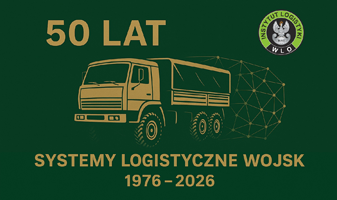REVIEW PAPER
Reliability issues of combat means
1
Pion Badań, Wojskowy Instytut Techniki Pancernej i Samochodowej, Polska
2
Centrum materiałów wybuchowych i środków bojowych, Wojskowy Instytut Techniczny Uzbrojenia, Polska
3
Centrum Uzbrojenia Strzeleckiego i Osłon Balistycznych, Wojskowy Instytut Techniczny Uzbrojenia, Polska
A - Research concept and design; B - Collection and/or assembly of data; C - Data analysis and interpretation; D - Writing the article; E - Critical revision of the article; F - Final approval of article
Submission date: 2025-05-22
Acceptance date: 2025-09-18
Publication date: 2025-09-30
Corresponding author
Piotr Kasprzak
Pion Badań, Wojskowy Instytut Techniki Pancernej i Samochodowej, Okuniewska 1, 05-070, Sulejówek, Polska
Pion Badań, Wojskowy Instytut Techniki Pancernej i Samochodowej, Okuniewska 1, 05-070, Sulejówek, Polska
SLW 2025;62(1):81-94
KEYWORDS
TOPICS
ABSTRACT
The article addresses the fundamental functional prerequisites necessary to ensure the reliability of combat assets during their operational use. It outlines and characterizes the functional components of reliability within systems exhibiting both series and parallel configurations. The quantifiable aspect of reliability encompasses the critical conditions required for these structural configurations to function effectively.
Based on the analyzed reliability components, key availability indicators were defined, along with exemplary values that these indicators may assume for various categories of combat assets. These indicators constitute the basis for determining prognostic parameters, which are capable of characterizing the reliability behavior of a combat asset throughout its operational life cycle.
The research contribution of the article lies in demonstrating the practical applicability of reliability theory to the domain of combat assets. The primary objective of the research was to identify and describe the correlations between reliability issues and combat systems, whose operational condition requires ongoing monitoring. As demonstrated, the principles of reliability theory provide an accurate framework for describing failure mechanisms and operational degradation processes in such assets.
The article includes illustrative calculations of reliability indicators for a notional combat system, based on practical research experience with real-world military assets. It is shown that weapon systems may be analyzed within the framework of reliability engineering, similarly to other types of technical equipment whose performance and failures can be described using mathematical models. However, the detailed procedures and workflows are usually developed at the initiation of operational deployment and are subsequently refined and expanded in response to service experience and feedback.
Given the ongoing modernization of armaments within the Polish Armed Forces, there is a critical need for the continuous enhancement of test methodologies and diagnostic tools used in the evaluation of emerging combat systems. This underscores the importance of adapting research infrastructure and instrumentation to meet current and future technical requirements
Share
RELATED ARTICLE
We process personal data collected when visiting the website. The function of obtaining information about users and their behavior is carried out by voluntarily entered information in forms and saving cookies in end devices. Data, including cookies, are used to provide services, improve the user experience and to analyze the traffic in accordance with the Privacy policy. Data are also collected and processed by Google Analytics tool (more).
You can change cookies settings in your browser. Restricted use of cookies in the browser configuration may affect some functionalities of the website.
You can change cookies settings in your browser. Restricted use of cookies in the browser configuration may affect some functionalities of the website.


